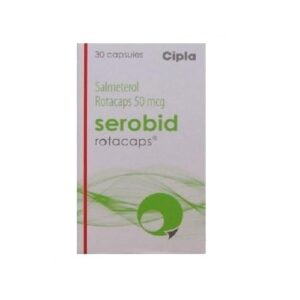SALMETEROL
SALMETEROL: Salmeterol is a long-acting beta-agonist bronchodilator medication used in the treatment of asthma and chronic obstructive pulmonary disease (COPD). It is typically administered in an inhaler device and is often prescribed along with corticosteroid medications.
The mechanism of action of salmeterol involves stimulating the beta2-adrenergic receptors in the smooth muscles of the airways. This stimulation results in relaxation of the bronchial muscles, thus opening up the airways and allowing for improved airflow. Additionally, salmeterol helps to prevent the release of inflammatory substances from mast cells, which further aids in reducing airway inflammation and constriction.
The usual dose of salmeterol for adults and children 4 years of age and older with asthma is 1 inhalation (50 mcg) twice daily. For patients with stable COPD, the recommended dose is also 1 inhalation (50 mcg) twice daily. It is important to follow the prescribed dosage and administration instructions provided by the healthcare professional.
As with any medication, there are potential side effects associated with salmeterol. The most common side effects include headache, throat irritation, tremor or shakiness, rapid heartbeat, and muscle cramps. Less commonly, salmeterol can lead to allergic reactions, worsening of asthma symptoms, chest pain, and changes in blood pressure. It is advised to seek immediate medical attention if these more severe side effects occur.
It is worth noting that salmeterol should not be used as a rescue medication for acute asthma symptoms or bronchospasm. In such situations, a short-acting bronchodilator like albuterol should be used instead. Regular use of salmeterol is important for its effectiveness in preventing asthma attacks and COPD symptoms, but it should always be used in combination with an appropriate corticosteroid inhaler as prescribed by a healthcare professional.

